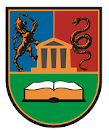Please use this identifier to cite or link to this item:
https://scidar.kg.ac.rs/handle/123456789/22562Full metadata record
| DC Field | Value | Language |
|---|---|---|
| dc.contributor.author | Savković, Marija | - |
| dc.contributor.author | Djapan, Marko | - |
| dc.contributor.author | Caiazzo, Carlo | - |
| dc.contributor.author | Bodić, Aleksandar | - |
| dc.contributor.author | Vukicevic, Arso | - |
| dc.contributor.author | Macuzic, Ivan | - |
| dc.date.accessioned | 2025-10-08T08:03:32Z | - |
| dc.date.available | 2025-10-08T08:03:32Z | - |
| dc.date.issued | 2025 | - |
| dc.identifier.isbn | 978-86-6093-123-0 | en_US |
| dc.identifier.uri | https://scidar.kg.ac.rs/handle/123456789/22562 | - |
| dc.description.abstract | In the modern contemporary environment, simultaneous monitoring of physical and mental strain is very important in order to improve ergonomic conditions and the health of workers. This research paper presents a multimodal approach to assessing the physical and mental strain of workers during assembly activities. The proposed model combines the RULA (Rapid Upper Limb Assessment) method for assessing ergonomic risk and the EEG (electroencephalography) method for evaluating mental strain. Through an experimental study conducted on a sample of 7 subjects, the implications of assuming certain body postures on the physical and cognitive state of the subjects were analyzed. The results indicated a significant association between the adoption of non-physiological and non-ergonomic body postures and increased mental effort, which indicates the need for an integrated assessment when designing ergonomic workplaces. The results obtained showed that the application of ergonomic principles contributes to the reduction of physical and mental strain. The results also confirm that high levels of physical strain lead to changes in the brain activity of the subjects that correspond to increased mental effort. The proposed approach can serve as a basis for the development of advanced systems for monitoring and optimizing worker performance and well-being. | en_US |
| dc.language.iso | sr | en_US |
| dc.publisher | Niš: Faculty of Occupational Safety | en_US |
| dc.relation.ispartof | Safety engineering & management - science, industry, education (SEMSIE 2025) | en_US |
| dc.rights | CC0 1.0 Universal | * |
| dc.rights.uri | http://creativecommons.org/publicdomain/zero/1.0/ | * |
| dc.subject | Mental strain | en_US |
| dc.subject | multimodal approach | en_US |
| dc.subject | ergonomic | en_US |
| dc.subject | physical strain | en_US |
| dc.subject | RULA | en_US |
| dc.title | MULTIMODAL ANALYSIS OF WORKERS' COGNITIVE AND PHYSICAL STRESS | en_US |
| dc.type | conferenceObject | en_US |
| dc.description.version | Published | en_US |
| dc.identifier.doi | 10.46793/SEMSIE25.073S | en_US |
| dc.type.version | PublishedVersion | en_US |
| dc.source.conference | The 21th International Conference “Man and Working Environment”, 25-26 September 2025, Sokobanja, Serbia | en_US |
| Appears in Collections: | Faculty of Engineering, Kragujevac | |
Files in This Item:
| File | Description | Size | Format | |
|---|---|---|---|---|
| 11-Marija_Savkovic.pdf | 1.03 MB | Adobe PDF |  View/Open |
This item is licensed under a Creative Commons License


